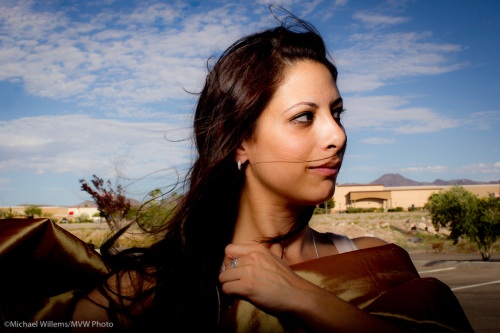I received my iPad 3G the day it was released in Canada. Time for a quick review of this oh so important device for photographers, i thought.
In short: The iPad (or in apple-speak, just “iPad”) is a great device. Not a general purpose computer: it is limited, in part by physical limitations and in part by Apple’s need for control. But in spite of this you may well need one. In fact I think you do.

But before I explain why you need one, let’s start with the bad.
Many restrictions are clearly designed to give Apple control over what we do. Restrictions like the fact that it is completely locked down. You cannot add apps other than those okayed by Apple: Steve Jobs gives you, as he put it recently, “freedom”, namely the “freedom from pornography”. Big mistake, as it shows his true colours. Apple needs to be careful: Sony became irrelevant because of its media-ownership inspired controlfreakery, and Apple is slowly on its way to do the same.
An iPad is like a car, or a cable company PVR: you’re really just renting it and you get the feeling that tuning it to your needs would be, if it were up to Apple, a criminal offense. In fact in Canada, jail breaking may soon be exactly that.
So you need iTunes, a horrible app designed seemingly only to give Apple control, for everything. Even for simple things like deleting an image from a photo gallery, or moving one, you need iTunes.
This is inconvenient. I recently noticed I had one incorrect image in a gallery I was about to show as a slideshow on the iPad. Alas, I was 100km away from home, and to delete this one image I would have had to drive back to my iMac. This portable device is only portable if your iMac is, too. (And no, you cannot carry the laptop, because you have to sync your iPad either with your MacBook or with your iMac, not both.)
There is more such evilness. You cannot sync over Bluetooth or WiFi, thus requiring silly cables. You cannot set a default browser other than Apple’s Safari (like iCab, which is a more functional browser). You cannot just save files. The photo browser is very limited, and does not for instance support hierarchical folders. There is no file manager.
Some of the lack of functionality is not evil, but just consists of unnecessary restrictions by Apple engineers who inexplicably do not think this is necessary. Many simple settings are missing: again like your PVR or car, the device is hardly tunable, and this does get in the way.
For example,
- In an astonishing oversight, you cannot sort images in the galleries. It’s alphabetical or nothing. “Just rename them”, the fanbois say. Oh – any idea how much work it is to rename 100 images in a gallery? what happened to drag-and-drop?
- You cannot set the day of week to start when you want (apparently an Apple week starts on Sunday, while mine starts Monday), except as a workaround by setting your country as UK. But then you get Google UK searches every time you search in the browser, and new addresses are added in the UK, with silly phone number formatting.
- If you have multiple calendars, like one for work and one for personal appointments, then you cannot change the calendar an appointment belongs to once you have created it: instead, you have to delete and recreate the appointment.Another astonishing oversight.
- There is no-good to-do list app that syncs. Apple is immune to corporate functionality, it sometimes seems.
- The mail client is limited. If you have two accounts, as I and many others have, it takes many clicks each time to check them both, navigating back and forth through a very laborious interface. You also cannot set a “from” address. When creating mail, you cannot use bullets. Or numbered lists. Or a properly formatted signature file: that alone is a big limitation for me. So yes, you can email, but it is unnecessarily restricted and half the time I go back to my Mac. I am not sure why Apple does not add more functionality where it clearly is needed and does not rely on heavy processing power or memory.
- Few Apple employees can be bilingual. I keep having the iPad “correct” my spelling when it shouldn’t. Not to Apple: Some of us speak multiple languages!
- I cannot edit my WordPress blog on the iPad, or see statistics. The HTML is too complex, I suppose, and the statistics page uses Flash.
Things like that are annoyances, but time-wasting ones. I just wasted five minutes trying to enter an address in Canada, but the device kept defaulting to the UK. Turns out you cannot just enter the country: I had to make up a city and street.
So OK, the iPad is not a general purpose computer. Then why do you need one?
Let’s look at the benefits. They are mainly obvious ones, but until you use one you don’t really see how changing they are.
Like the big bright LED backlit screen. Many other things that seem too obvious to mention but that are nevertheless huge, like:
- 10 hours away from a charger
- No need to open a lid to use it
- Wireless on the go at all times
- A useable keyboard
- Its smaller than a laptop
- Orientation sensing, with a switch so you can read in bed.
- Great reader apps ibooks and kindle
The secret, I think, is to look at the iPad as a better mousetrap.
It is all of these:
- a book reader, but one that plays all your music too
- a web browser, but one with a touch screen
- a photo viewer, but one that also browses the web
- a portable computer, but one that is always wirelessly connected
- a portable email device, but one with a large enough keyboard
- a portable computer, but one with 10 hours battery life on one charge
- …and so on.
This device is like the hitchhikers guide to the galaxy. Obvious benefits like the ones above lift this pad info an entirely new computing device category.
And of course the way it shows off photos, in spite of the limitations, is fabulous. Much better than a portfolio book.
And yes I did write this on the iPad. In bed.


 No flash fired
No flash fired











